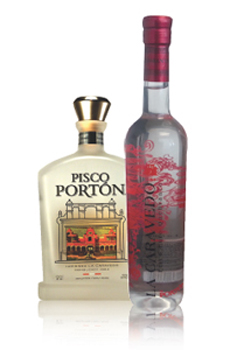FOOD HOLIDAY: Make A Pisco Sour For National Pisco Day
|
|
Quinoa isn’t the only hot product from Peru. Pisco, Peru’s national spirit, is another.
Peruvians honor their pisco so much there are two annual holidays celebrated nationally: Pisco Sour Day (Día del Pisco Sour), the first Saturday of February; and Pisco Day (Día del Pisco), the fourth Sunday of July. Pisco, a grape-based white spirit, dates from the 16th century. It is Denomination of Origin (D.O.) protected, which means it must be made in Peru, in traditional copper pot stills in small batches. Pisco was created as an act of rebellion. In 1641, Philip IV, King of Spain imposed heavy taxes on all wine produced in Peru. His Peruvian subjects dodged the tax by distilling the year’s grape harvest in hand-forged copper vats. A new white spirit was born and christened pisco, after the Port of Pisco from where it was exported. (Pisco means “bird” in the indigenous Quechua language.) |
|
|
Pisco became so popular that when the pirate Sir Francis Drake took hostages from the Port of Pisco in the 16th century, he demanded a ransom of 300 bottles. Types Of Pisco There are three types of pisco: |
||
|
RECIPE: PISCO SOUR It is believed that the Pisco Sour was invented in at Morris’ Bar in Lima the 1920s by its American owner, Victor Morris. The recipe was perfected by bartender Mario Bruguet, who added the egg whites to create the velvety cocktail we enjoy today. Here’s Pisco Portón’s recipe for the most popular pisco drink, Pisco Sour. |
|
|
|
1. PLACE all ingredients in a blender. Blend on high for 15 seconds, add 5 cubes of ice, and then pulse in the blender 5 times. 2. STRAIN into a glass. Garnish with 3 drops of Angostura bitters. Here’s a recipe for Pisco Punch. You can find other classic pisco recipes at PiscoPorton.com. |
||




